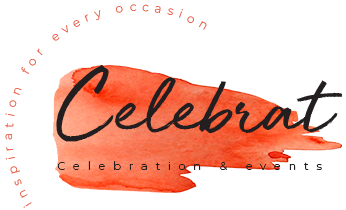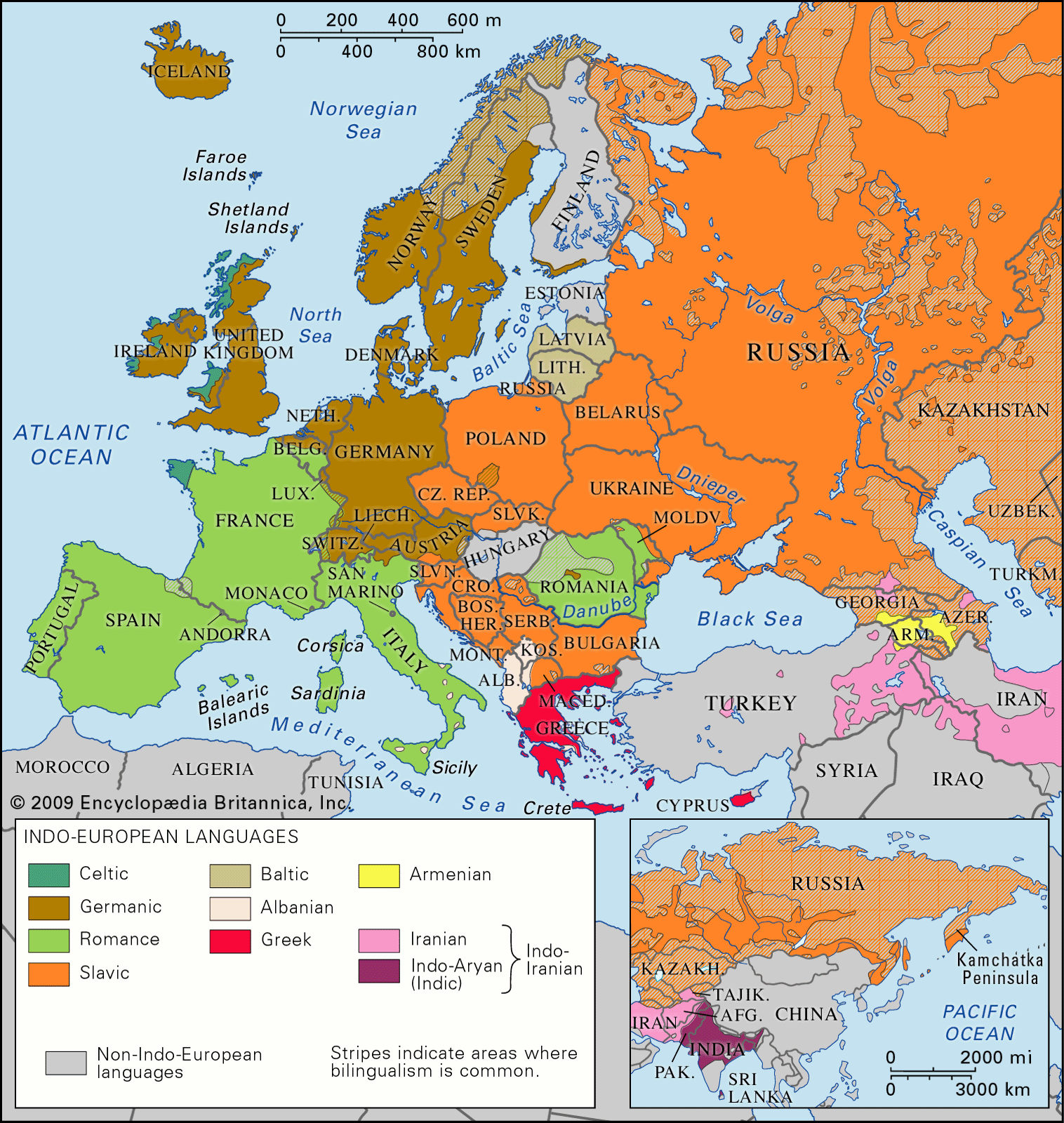Indo-European languages | Definition, Map, Characteristics, & Facts
Languages of the family
The well-attested languages of the Indo-European family fall fairly neatly into the 10 main branches listed below; these are arranged according to the age of their oldest sizable texts.
Now extinct, Anatolian languages were spoken during the 1st and 2nd millennia bce in what is presently Asian Turkey and northern Syria. By far the best-known Anatolian language is Hittite, the official language of the Hittite empire, which flourished in the 2nd millennium. Very few Hittite texts were known before 1906, and their interpretation as Indo-European was not generally accepted until after 1915; the integration of Hittite data into Indo-European comparative grammar was, therefore, one of the principal developments of Indo-European studies in the 20th century. The oldest Hittite texts date from the 17th century bce, the latest from approximately 1200 bce.
Indo-Iranian comprises two main subbranches, Indo-Aryan (Indic) and Iranian. Indo-Aryan languages have been spoken in what is now northern and central India and Pakistan since before 1000 bce. Aside from a very poorly known dialect spoken in or near northern Iraq during the 2nd millennium bce, the oldest record of an Indo-Aryan language is the Vedic Sanskrit of the Rigveda, the oldest of the sacred scriptures of India, dating roughly from 1000 bce. Examples of modern Indo-Aryan languages are Hindi, Bengali, Sinhalese (spoken in Sri Lanka), and the many dialects of Romany, the language of the Roma.
Get a Britannica Premium subscription and gain access to exclusive content.
Subscribe Now
Iranian languages were spoken in the 1st millennium bce in present-day Iran and Afghanistan and also in the steppes to the north, from modern Hungary to East (Chinese) Turkistan (now Xinjiang). The only well-known ancient varieties of Iranian languages are Avestan, the sacred language of the Zoroastrians (Parsis), and Old Persian, the official language of Darius I (ruled 522–486 bce) and Xerxes I (486–465 bce) and their successors. Among the modern Iranian languages are Persian (Fārsī), Pashto (Afghan), Kurdish, and Ossetic.
Greek, despite its numerous dialects, has been a single language throughout its history. It has been spoken in Greece since at least 1600 bce and, in all probability, since the end of the 3rd millennium bce. The earliest texts are the Linear B tablets, some of which may date from as far back as 1400 bce (the date is disputed) and some of which certainly date to 1200 bce. This material, very sparse and difficult to interpret, was not identified as Greek until 1952. The Homeric epics—the Iliad and the Odyssey, probably dating from the 8th century bce—are the oldest texts of any bulk.
The principal language of the Italic group is Latin, originally the speech of the city of Rome and the ancestor of the modern Romance languages: Italian, Romanian, Spanish, Portuguese, French, and so on. The earliest Latin inscriptions apparently date from the 6th century bce, with literature beginning in the 3rd century. Scholars are not in agreement as to how many other ancient languages of Italy and Sicily belong in the same branch as Latin.
In the middle of the 1st millennium bce, Germanic tribes lived in southern Scandinavia and northern Germany. Their expansions and migrations from the 2nd century bce onward are largely recorded in history. The oldest Germanic language of which much is known is the Gothic of the 4th century ce. Other languages include English, German, Dutch, Danish, Swedish, Norwegian, and Icelandic.
Armenian, like Greek, is a single language. Speakers of Armenian are recorded as being in what now constitutes eastern Turkey and Armenia as early as the 6th century bce, but the oldest Armenian texts date from the 5th century ce.
The Tocharian languages, now extinct, were spoken in the Tarim Basin (in present-day northwestern China) during the 1st millennium ce. Two distinct languages are known, labeled A (East Tocharian, or Turfanian) and B (West Tocharian, or Kuchean). One group of travel permits for caravans can be dated to the early 7th century, and it appears that other texts date from the same or from neighbouring centuries. These languages became known to scholars only in the first decade of the 20th century. They have been less important for Indo-European studies than Hittite has been, partly because their testimony about the Indo-European parent language is obscured by 2,000 more years of change and partly because Tocharian testimony fits fairly well with that of the previously known non-Anatolian languages.
Celtic languages were spoken in the last centuries before the Common Era (also called the Christian Era) over a wide area of Europe, from Spain and Britain to the Balkans, with one group (the Galatians) even in Asia Minor. Very little of the Celtic of that time and the ensuing centuries has survived, and this branch is known almost entirely from the Insular Celtic languages—Irish, Welsh, and others—spoken in and near the British Isles, as recorded from the 8th century ce onward.
The grouping of Baltic and Slavic into a single branch is somewhat controversial, but the exclusively shared features outweigh the divergences. At the beginning of the Common Era, Baltic and Slavic tribes occupied a large area of eastern Europe, east of the Germanic tribes and north of the Iranians, including much of present-day Poland and the states of Belarus, Ukraine, and westernmost Russia. The Slavic area was in all likelihood relatively small, perhaps centred in what is now southern Poland. But in the 5th century ce the Slavs began expanding in all directions. By the end of the 20th century Slavic languages were spoken throughout much of eastern Europe and northern Asia. The Baltic-speaking area, however, contracted, and by the end of the 20th century Baltic languages were confined to Lithuania and Latvia.
The earliest Slavic texts, written in a dialect called Old Church Slavonic, date from the 9th century ce, the oldest substantial material in Baltic dates to the end of the 14th century, and the oldest connected texts to the 16th century.
Albanian, the language of the present-day republic of Albania, is known from the 15th century ce. It presumably continues one of the very poorly attested ancient Indo-European languages of the Balkan Peninsula, but which one is not clear.
In addition to the principal branches just listed, there are several poorly documented extinct languages of which enough is known to be sure that they were Indo-European and that they did not belong in any of the groups enumerated above (e.g., Phrygian, Macedonian). Of a few, too little is known to be sure whether they were Indo-European or not.
Sharing is caring 💕 don’t forget to share this post on Twitter !

